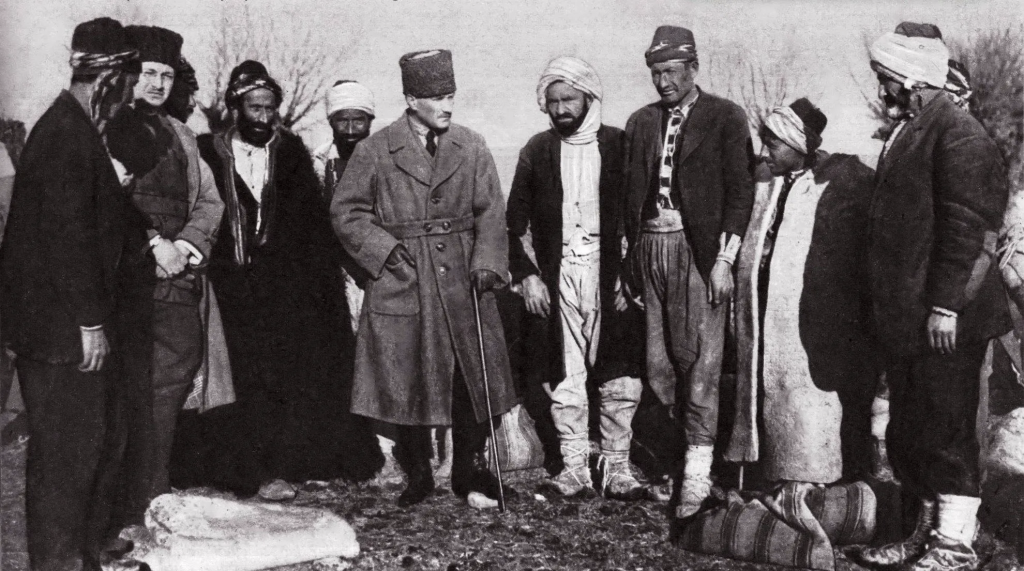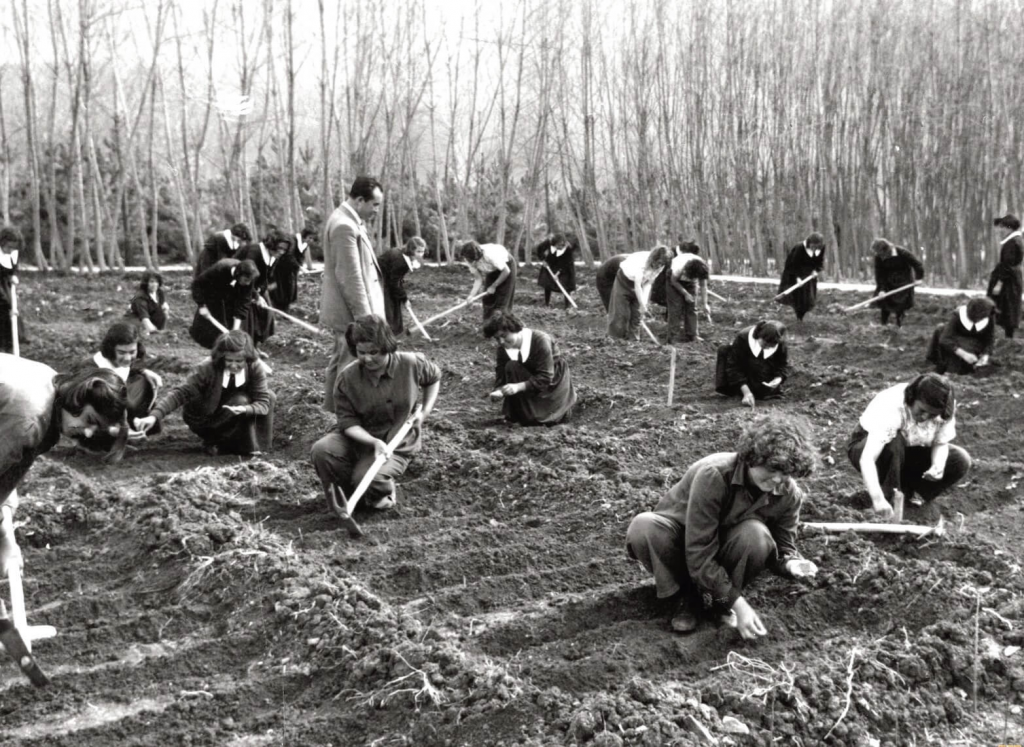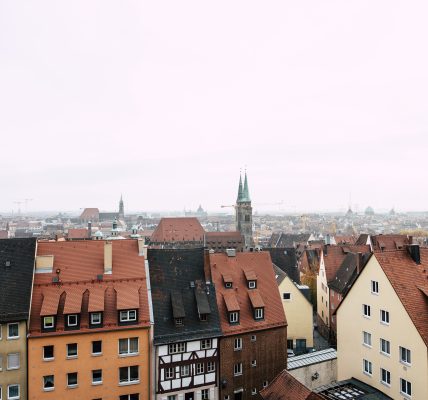How to kickstart a nation’s rural development: A case study looking at “Village Institutes” in Turkey
Having declared itself a republic in 1923 after a remarkably destructive war, Turkey was in dire need to begin fulfilling its promises on modernisation, secularisation and nation-building. A series of complementary socio-political, economic, and cultural reforms took place in the early half of the 20th century. One of such reforms was educational, said to be the basis of all reforms.
Upon his visit to Turkey, American philosopher John Dewey had established the country’s need for an increase in overall literacy rates, and provided several suggestions for a new pedagogical philosophy (Bilgi & Özsoy, 2005) Certainly, many other foreign and Turkish intellectuals had similar ideas; a switch from traditional, religious education to positivism and western scholastic values was a must.
Concurrently, the murmurs of post-war peasantism1 in Europe were also being felt in Turkey. Though the enemy was not industrialisation itself – as mentioned, Turkey was in urgent need to industrialise and to modernise – it was the disparity of development and quality of living between cities and rural villages, which also caused excessive urban migration. The Turkish intelligentsia had come in contact with the deep realities of its rural population for the first time during the war, which opened their eyes on the sheer cultural, ideological, and economic gap that existed between those who lived in cities and the ‘peasants’ (Karaömerlioglu, 1998). The goal then had to be to improve the average villager’s living conditions along with their education, and to make villages more productive, developed and less urban-dependent.

https://mustafakemalim.com/tag/ataturk-ve-koyluler
“The master of this country is the peasant. Elevating the Turkish peasant to this rank of mastery is our most important duty and goal.” – Mustafa Kemal Atatürk
Thus the Village Institutes were born. Established by the state and the ministry of education in the early 1940s to address the country’s rural development and educational needs, these rural schools embodied a Deweyan method of learning through practical, physical and communal tasks alongside subjects of intellect.
More interestingly, the teaching of modern agricultural techniques and practices formed a large part of the overall curriculum. Since eighty percent of the population lived in “small, impoverished villages, eking out a meagre living from an exhausted soil with primitive farming techniques” (Başgöz & Wilson, 1997, p. 156) Village Institutes sought to improve the villagers’ self-sufficiency and help the nation’s overall goal of agricultural and economic development in a time where “producing wheat was more important than reading books” (Tütengil, 1948, p. 162).
A major challenge in providing rural education is finding teachers who know the realities of rural life, who do not feel alienated living in such conditions and can communicate effectively with villagers. Even retaining such teachers who prefer better economic opportunities in the city is a problem in-itself. Village Institutes tackled this issue by encouraging their graduates to serve as teachers in their own native villages, in a kind of “peasants teaching peasants” system (Karaömerlioglu, 1998). Village Institutes hoped to fill the gap between the ‘elite’ and the ‘peasants’ by creating “elites amongst the peasants”; villagers with greater human capital and social mobility, who know how to sustain and develop rural areas (Karaömerlioglu, 1998).
The reception of village institutes, their efficacy, and why they were ultimately closed in the 1950s, is still a highly discussed, multilayered and sensitive topic. While the institutes produced a number of well-trained teachers and made substantial contributions to rural education and development, they also faced significant criticism and resistance, particularly from conservative and religious segments of the Turkish society who viewed the secular and modernist ideals of the institutes as a threat to traditional values and social structures.
Additionally, the Democrat Party, which came to power in 1950, criticised the institutes as sites of coerced labour and accused its founders of spreading communist ideas2. Indeed, the ideological foundations of Village Institutes were influenced by ‘weeded out’ versions of practices in Moscow and other places in Europe (Stone, 1974), though it is more accurate to say they were backed by a Kemalist ideology.
Even the secular, elitist faction within the Republican People’s Party – being the ones who had launched this whole project to begin with – were growing wary of its consequences3. It is probable that, despite championing villagers as ‘the masters of the nation’, they had hoped this to be in rhetoric only. In other words, the Village Institutes had become too successful, creating ‘overly confident’, disobedient, and like-minded villagers who now challenged the privileged authority of the ruling class. The corporatist elite also feared that the peasant intelligentsia, originally designed to be unable to break free from its own class and rural life, now faced an integration with urban life thanks to developments in communication and transportation (Tonguç, 1970).

“Look until today no official came to us talking like you did. They never considered us as humans. They called us to their place, gave orders or sent gendarmes. So now we understand that we are also humans. You showed us this!”
(A quote from a peasant in Rauf Inan’s book: “Bir Ömrün Öyküsü”)
There are perhaps a dozen more points of criticism hurled at Village Institutes, including claims that they were an ethnonationalist ‘Turkification’ project, aimed to solidify and extend the Turkish nation-state’s control/authority4. Attacks like such, have all played their own role in the gradual phasing out of this project in the late 1940s.
The fact of the matter is, with Turkey’s transition to a multi-party political system after the second world war, institutions designed under the ideals of the previous regime (that of RPP), would face strong political pressure regardless. Keeping these institutions alive was thus seen as an impossible task (Karaömerlioglu, 1998). Still, the closure marked a significant setback for rural education and development in Turkey, leading to a decline in literacy rates and slowing the pace of modernization in rural areas.
Further Reach
Village Institutes were an innovative yet short-lived project in an attempt to revitalise Turkey’s rural economy and development. Their success was not only seen materially, but felt culturally for decades to come. Several questions and curiosities remain today, regarding the possible revival of such a project, and whether it would have the same effects in a different time and landscape. In this final section, I will propose a reformation of Village Institutes to better suit the contemporary world, as I believe much of the initial success of these rural schools depended on the historical context they existed in which can not be replicated in the present.
Surely, a Village Institute-like project, focusing on agricultural education as a way of fostering sustainable production and growing human capital seems relevant in a world where the developmental gap between rural and urban and challenges in rural education/revitalization persist. However, it’s important to recognize that the relationship between agricultural education and economic development is no longer as straightforward as it once was. A century ago, agricultural education aimed primarily at boosting productivity and self-sufficiency within the clear context of nation-building and modernization. Today, agricultural development is enmeshed in a web of global challenges, including climate change and the dominance of corporate agribusiness monopolies. In many less developed countries, agricultural outputs are often funnelled to wealthier nations, leaving local communities exposed to food insecurity (Jarosz, 2012). Additionally, small-scale farmers face dwindling autonomy, as access to essential resources like land and equipment is increasingly controlled by hegemonic entities, stifling local agricultural practice (2012). This industrial shift has also contributed to a growing alienation from nature, with urbanisation and technological progress further distancing people from the sustainable practices that once rooted them in the land with hands-on learning and doing.
I would then argue, a project like the establishment of Village Institutes, could see more use if reinterpreted as a way of reconnecting communities with nature, promoting environmental stewardship and awareness. This would involve teaching not just how to cultivate the land, but how to do so in ways that regenerate ecosystems, preserve biodiversity, and mitigate the impacts of climate change, teaching the “why’s” and the “for whom’s” of farming along with the “how?”. By shifting the focus to ecological literacy and sustainable living, these reimagined institutes could serve as centres for learning about permaculture, organic farming, and conservation, offering a blueprint for how communities can thrive in balance with their natural surroundings.
This ecological model could resonate strongly in developed nations too, providing a space for collective learning and action, encouraging communities to take charge of their environmental future and fostering a deeper understanding of the vital connection between sustainable agriculture, environmental health, and human well-being. By revisiting and adapting the lessons of the Village Institutes, modern educational reforms could potentially make a significant impact not only in rural areas but also in the broader effort to create a more sustainable and ecologically conscious world.
_________________________________________________________________________________________
Notes:
1 The term “peasantism” in this article, is used to highlight an attitude of sympathy or admiration some city-dwellers and modernists had towards the village/peasant life after the first world war, especially in Europe. Many were already beginning to feel a sense of emptiness, meaninglessness and degeneracy from the industrial, material-oriented lifestyle. Rural life then was seen as a stronghold of traditional and national values.
2 The Republican People’s Party saw a split in 1946 due to differences in views and the Democrat Party was established by some of RPP’s ex-members to oppose its rule. Still considered ideologically Kemalist, the Democrat Party was less statist and did not advocate for secularism with the same vigour RPP did.
3 It is important to mention that terms used in Turkish politics (‘republican’, ‘democrat’ etc.) come from a notably different political history. These terms usually represent incredibly contextual ideologies that are often non-reducible to ‘left’ vs. ‘right’ or another generic dichotomy.
4 Village Institutes often contained cultural teachings with subjects like literature, music and drama as a to help students connect with their cultural heritage, as well as Turkish intellectual history, all under the umbrella of holistic teaching. The problem was that there were quite a significant number of exclusively or predominantly Kurdish, Alawite and Armenian villages in Anatolia, and these people did not necessarily feel close to such cultural teachings. Thus, there were instances of leftists referring to the Institutes as “fascistic”: An old Institute teacher who was forced to let go due to accusations of leftism, criticised the Institutes for attempting to extend state control and indoctrinating villagers with Kemalist and secular values (Karaömerlioglu, 1998).
_________________________________________________________________________________________
Bibliography:
Başgöz, I., & Wilson, H. E. (1997). Educational problems in Turkey, 1920-1940. Curzon Press.
Bilgi, S., & Özsoy, S. (2005). John dewey’s travelings into the project of turkish modernity. In T. S. Popkewitz (Ed.), Inventing the Modern Self and John Dewey (pp. 153–177). Palgrave Macmillan US. https://doi.org/10.1057/9781403978417_7
İnan, R. (1986). Bir Ömrün Öyküsü. Öğretmen Yayınları.
Jarosz, L. (2012). Growing inequality: Agricultural revolutions and the political ecology of rural development. International Journal of Agricultural Sustainability, 10(2), 192–199. https://doi.org/10.1080/14735903.2011.600605
Karaömerlioglu, M. A. (1998). The village institutes experience in Turkey. British Journal of Middle Eastern Studies, 25(1), 47–73. https://doi.org/10.1080/13530199808705654
Stone, F. A. (1974). Rural revitalization and the village institutes in turkey: Sponsors and critics. Comparative Education Review, 18(3), 419–429. https://www.jstor.org/stable/1187872
Tonguç, E. (1970). Devrim açısından köy enstitüleri ve Tonguç (Vol. 33). Ant Yayınları.
Tütengil, C. O. (1948). Köy Enstitüsü Üzerine düşünceler. Kepirtepe Köy Enst. & Berksoy Basımevi.






